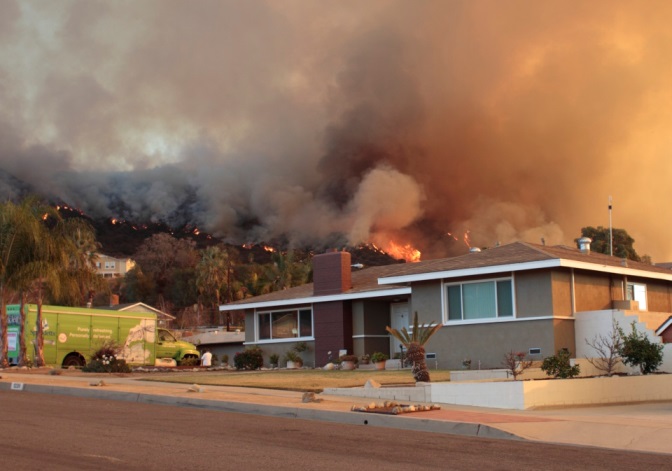
A study conducted by Headwaters Economics explored how firefighting costs might be affected by the application of Firewise principles in a community. To achieve official status as a Firewise Community, it must get a written wildfire risk assessment from their state forestry agency or fire department. Second, communities are required to generate an action plan and form a board or committee based on their risk assessment. Next, they must organize and hold a public education “Firewise Day” event. The final step before applying requires that they invest at least $2 per person in annual Firewise actions.
But those requirements do not guarantee that a large percentage of homeowners will actually take steps to create defensible space or use fire resistant building materials on their structures. There is also no requirement that a community construct a large-scale fuelbreak that would reduce the intensity of an approaching wildfire and the accompanying ember shower that is the culprit for igniting most homes during a fire seige.
The study analyzed costs of 111 fires. Their conclusion was:
We find no evidence of a relationship between suppression costs and Firewise participation represented by: (1) the percent of homes in Firewise Communities for the area within 6 mi. (9.7 km) of wildfires, and (2) the Firewise-related expenditures by residents. The lack of evidence that Firewise reduces suppression costs suggests that policy makers attempting to address rising suppression costs are better served focusing on other solutions, including increasing suppression funding and managing future development in high-risk areas.
The Firewise program is not designed to reduce the costs of fire suppression. Its goals are to reduce the deaths of residents, protect private property from fire, and enhance the safety of firefighters and the general population.
During the course of the study the researchers interviewed 16 Type 1 and 2 Incident Commanders. Some of them stated that the patchwork nature of the creation of defensible space and the use of fire resistant building materials at the parcel level within a Firewise Community made it difficult to modify fire suppression tactics and strategy based on an official community-wide designation .

For emergency planners, Firewise is a success regardless of impact to suppression costs or the perceived benefit of projects.
When we are talking about WUI fires then reducing the deaths of residents, protecting private property from fire, and enhancing the safety of firefighters and the general population should be the main goals. Costs are secondary.
Long term goals of reducing impacts of wildfire, restoring forest health and moving dollars spent from suppression to mitigation and forestry should be what we are working on. Firewise is a start. It brings communities together, reduces some of the strain on local government to have to regulate and enforce by the people doing it themselves (should be more of that). Firewise allows local responders and emergency planners a chance to better develop strategies with small groups that make firefighting safer, prepare the people to help themselves and give the dollars spent on suppression a better chance (maybe only here and there so far) of doing some good.
An interesting wrinkle from the homeowner or prospective homeowner (or for that matter insurer) perspective is that, currently, neither does Firewise status necessarily mean that anything tangible has really been done to reduce risk in a community. $2 per resident doesn’t buy a lot of changes to landscaping or structures. It’s a good first step towards moving more areas to more-responsible, enforceable, code, HOA and similar requirements, though.
FIREWISE reducing suppression costs???
FIREWISE was more along the lines of fuels reduction and as Bill noted…..reduction of residential deaths, protection of private property, and not least important firefighter safety…..
As I recall FIREWISE was a choice between itself as a program and the FEMA Pre Disaster Mitigation (PDM) grants that covered a 15 per cent of project costs or thereabouts.
But Firewise never sold a ” bill of goods” ever stating that it reduced suppression costs.
But like many organizations that would like to purport defense of the environment and state their views rather than really delving into grants and how they work……..
Like everything………..interpretation.